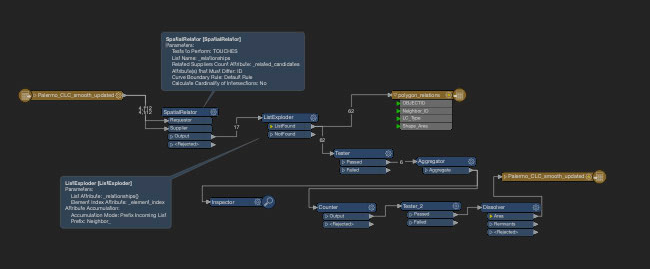I have a workbench where I have used Spatial Relator and List Exploder to make a list of polygon IDs and Neighbor_IDs of those polygons touching it. I want to count the number of touching polygons, and if they are greater than 3, find which are the same land cover type.
Something like: for every unique ID with more than three touching polygons of the same land cover type, with a combined area of less than 200,000m^2 -> dissolve.
I have a tester set up to test LC_type ID= LC_type Neighbor_ID, which passes to a counter measuring ID >=3
But I don't know how to give dissolver the condition not to dissolve if the resulting polygon is > 200,000m^2.
–






